LABORATORY ANIMAL ALLERGIES - Carnegie Mellon University
LABORATORY ANIMAL ALLERGIES - Carnegie Mellon University
LABORATORY ANIMAL ALLERGIES - Carnegie Mellon University
You also want an ePaper? Increase the reach of your titles
YUMPU automatically turns print PDFs into web optimized ePapers that Google loves.
<strong>LABORATORY</strong> <strong>ANIMAL</strong> <strong>ALLERGIES</strong><br />
Introduction<br />
Allergic reactions to animals are among the most common<br />
conditions affecting the health of workers involved in the care<br />
and use of research animals. An estimated 10 to 40% or all<br />
personnel who work with animal will develop allergies to<br />
animals. Notable sources of allergens from laboratory<br />
animals are from the proteins found in or on hair, dander,<br />
urine, saliva, and serum. These proteins are sufficiently<br />
foreign to the human immune system leading to potential<br />
immune reactions. It is therefore of great importance that<br />
personnel who work with laboratory animals understand the<br />
symptoms , the routes of exposure, the risk factors, and the<br />
preventative measures to be taken as they relate to laboratory<br />
animal allergy (LAA).<br />
Symptoms<br />
Allergic individuals may display any of a number of<br />
symptoms; allergic rhinitis (a condition characterized by<br />
runny nose and sneezing similar to hay fever); by allergic<br />
conjunctivitis (irritation and tearing of the eyes); by asthma<br />
(characterized by wheezing and shortness of breath), or by<br />
contact dermatitis (a red, bumpy rash that may appear where<br />
your skin touches the animal). If you have a stuffy nose or<br />
other respiratory signs, and if it seems to last longer than a<br />
common cold (weeks instead of days) then you may very well<br />
be suffering from an allergy<br />
Routes of Exposure<br />
Personnel may be exposed to animal allergens through<br />
inhalation, and contact between skin, eyes, and<br />
mucous membranes with materials from the animal.<br />
These materials include animal bedding, animal hair,<br />
animal urine, animal saliva and animal serum. In<br />
addition, direct contact between skin and the animal<br />
may produce an allergic response.<br />
Risk Factors<br />
Risk factors for developing laboratory animal allergies include<br />
history of previous allergies to animals and other environmental<br />
materials. A history of previous allergies (i.e., atopy) is not a<br />
guarantee that animal-related problems will develop, but some<br />
studies have found a correlation between pre-existing atopy<br />
and LAA.<br />
<strong>Carnegie</strong> <strong>Mellon</strong><br />
<strong>University</strong><br />
Phone: 412.268.8182 ● Fax: 412.268.7871<br />
Website: www.cmu.edu/ehs<br />
Environmental<br />
Health & Safety<br />
Laboratory Animal Allergies Page 1 of 2
<strong>LABORATORY</strong> <strong>ANIMAL</strong> <strong>ALLERGIES</strong> Page 2 of 2<br />
Preventative Measures Ho<br />
Laboratory Animal Allergies can often be managed by a combination of medical management and work place<br />
strategies. It's important to consult with a physician to determine the cause of your allergy in order to manage it<br />
effectively.<br />
The most effective way to control and prevent allergies is to minimize exposure to the allergens. If you work in an<br />
animal facility, or if you work with animals in a laboratory setting, the following practices may help reduce your<br />
exposure to animal allergens:<br />
• When possible, perform animal manipulations in an annually certified ventilated hood or a bio-safety cabinet.<br />
• When you're not working in a hood or cabinet, make sure that the animal room or other work area is adequately<br />
ventilated and that all the air handling equipment in the room is in good order. If there is doubt, please contact<br />
Facilities Management Systems (FMS) to measure the number of air changes in the room. Animal rooms should<br />
deliver at least 10 air changes per hour.<br />
• Don't wear your street clothes when working with animals. Wear dedicated, protective clothing.<br />
• Launder your protective clothing at work, or have it cleaned by a professional service. Don't take your protective<br />
clothing home with you. Lab coat laundering is available through the <strong>University</strong>’s Housing Services. Contact<br />
Andrew Lawson at (412)268-8405 to obtain further information.<br />
• Wash your hands frequently. Avoid touching your hands to your face while working in the laboratory.<br />
• Keep cages and your work area clean.<br />
• Use beddings that are not dusty such as corncob bedding and non-contact absorbent pads. Wood shavings may<br />
be dusty or not depending on their source and quality.<br />
• Reduce your skin contact with animals by wearing gloves and long-sleeved lab coats.<br />
• If you suffer from allergies to a species you must work with, consider wearing an approved, NIOSH certified N95<br />
respirator when in the animal facility. Respirators are, in general, less effective than the other methods shown<br />
above and should not be used as a substitute for good work place hygiene. Note: You must be enrolled in<br />
<strong>Carnegie</strong> <strong>Mellon</strong> <strong>University</strong>’s Respiratory Protection Program before wearing respiratory protection! To<br />
enroll in the program contact Mark Banister at 8-1493 or Andrew Lawson at 8-8405.<br />
If your job requires you to be exposed to something to which you are allergic, you should discuss with your physician<br />
what effect the allergy may have on your future health. Some workers are so severely affected that only a change in<br />
career will control their allergies.<br />
Our Mission:<br />
Environmental Health & Safety (EH&S) is committed to providing health and safety services<br />
that protect the <strong>University</strong> community and the environment.<br />
<strong>Carnegie</strong> <strong>Mellon</strong><br />
<strong>University</strong><br />
Phone: 412.268.8182 ● Fax: 412.268.7871<br />
Website: www.cmu.edu/ehs<br />
Environmental<br />
Health & Safety


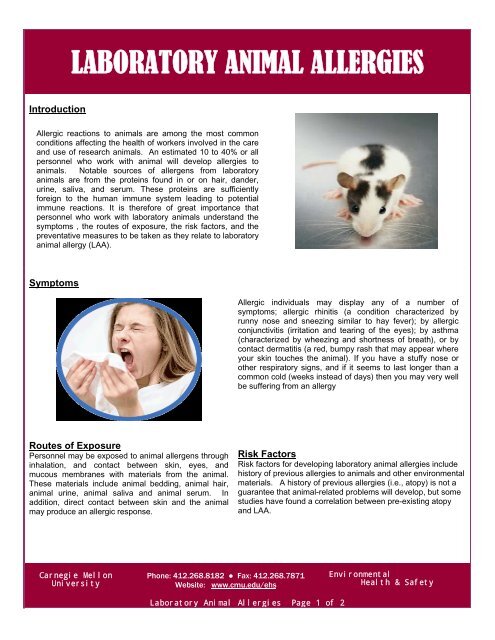
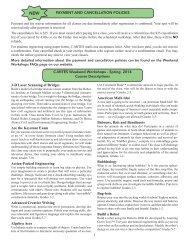

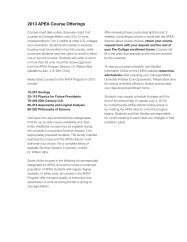
![Pittsburgh Neighborhoods [.pdf] - Carnegie Mellon University](https://img.yumpu.com/22011290/1/190x115/pittsburgh-neighborhoods-pdf-carnegie-mellon-university.jpg?quality=85)
![Curriculum Vitae [.pdf] - Carnegie Mellon University](https://img.yumpu.com/20737100/1/190x245/curriculum-vitae-pdf-carnegie-mellon-university.jpg?quality=85)

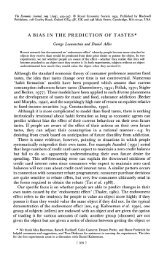
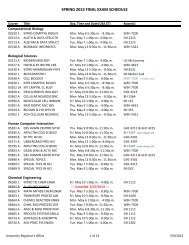
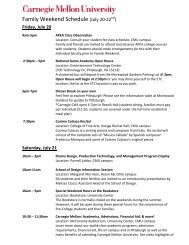
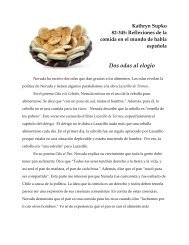


![May 2012 [.pdf] - Carnegie Mellon University](https://img.yumpu.com/12198417/1/190x253/may-2012-pdf-carnegie-mellon-university.jpg?quality=85)
